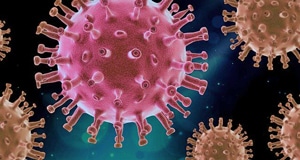
April 20, 2020
Interesting New COVID-19 Findings
By Michael D. Shaw
The front page of the Washington Post for April 16 featured a story detailing the saga of individuals, who, when exhibiting likely COVID-19 symptoms were told to stay home. They did so, and infected other family members, some of whom died. So, staying home with your family could be more dangerous than walking past a stranger in a supermarket?
Perhaps it’s time to get the opinion of a real world-renowned virologist, to counterbalance the nearly useless modeling (cf. here) and posturing of so-called public health “experts” and bureaucrats.
Listen to Hendrik Streeck, MD PhD, Head of the Institute of Virology and Institute for HIV Research, University Hospital Bonn, Germany. He was announcing results from research based on surveys and investigations in homes across the Heinsberg region (known as Germany’s epicenter for COVID-19)—where more than 1,400 confirmed cases had been reported. The city has a population of ca. 250,000 and 46 coronavirus-related deaths.
“There is no significant risk of catching the disease when you go shopping. Severe outbreaks of the infection were always a result of people being closer together over a longer period of time, for example the après-ski parties in Ischgl, Austria.”
As to spreading via surface contamination, Streeck noted that “When we took samples from door handles, phones, or toilets it has not been possible to cultivate the virus in the laboratory on the basis of these swabs. To actually [catch] the virus it would be necessary that someone coughs into their hand, immediately touches a doorknob and then straight after that another person grasps the handle and goes on to touch their face.”
There is also the recently confirmed finding that COVID-19 is a droplet infection and cannot be transmitted through the air. According to virologist Christian Drosten, coronavirus is extremely sensitive to drying out, so the only way of contracting it is if you were to inhale the droplets. There have been various reports touting long viability for the virus on surfaces, but caution should be exercised in comparing ideal laboratory conditions to real life.
Streeck’s results are also a cause for some optimism. While 14% of his cohort were infected, the overall death rate is only 0.37% (compared to 0.1% for the flu). This is much lower than earlier speculations, but Streeck has sufficient data to make a proper calculation. As such, we seem to be much closer to the herd immunity that will be necessary to control this scourge.
Also in play is the notion of viral evolution, which suggests—at least in theory—that a successful virus would not kill off its host too soon. Thus, the virus would tend to become somewhat less virulent as it spreads from host to host.
One of the more bizarre criticisms of Streeck’s work was put forth by epidemiologist Gérard Krause who stated that they should not have counted every single person who tested positive, but “only take one person per household.” Because if one person in the household is infected, they rest will soon follow suit, and the result will be falsified.
So, to determine the infection rate—which is the number of people infected divided by the total population studied—you should not really use the total population. Could this derive from jealousy that Streek is getting all the publicity? Isn’t academic science wonderful?
Funny though, that Krause tacitly assumes that one person in a household will soon infect everyone else, which seems to strike at the very heart of “shelter in place,” doesn’t it? To cite just one example, CNN’s Chris Cuomo states that he infected his wife.
The idea of a lower fatality rate seems to be confirmed in a Danish study of 1,487 blood donors, 22 of whom tested positive for the COVID-19 antibodies. If this is extrapolated to the entire population of Denmark, it works out to 127,000 people being infected in the country. And based on 203 Danes found to have died of coronavirus, it gives a mortality rate of 0.16%. But, assuming that blood donors are healthier than the rest of the population, this figure needs to be adjusted upward a bit.
Which brings us to the stunning findings of Professor Yitzhak Ben Israel of Tel Aviv University who plotted the rates of new coronavirus infections of the U.S., U.K., Sweden, Italy, Israel, Switzerland, France, Germany, and Spain. As it happens, irrespective of whether the country quarantined like Israel, or went about business as usual like Sweden, coronavirus peaked and subsided in exactly the same way.
This is way too reminiscent of the old joke about someone who was sure he had the cure for the common cold. “Take a tablespoon of this elixir every day, and in seven to ten days, your cold will be gone.”
